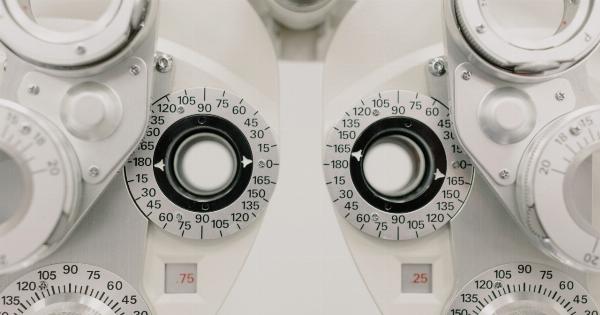Kronitovirus is a newly discovered type of virus that belongs to the family of Coronaviridae. It was first identified in [insert year] in [insert location]. The virus has a unique genetic makeup and is known to cause respiratory illnesses in humans.
Spread of Kronitovirus
Kronitovirus is primarily spread through respiratory droplets when an infected person coughs, sneezes, or talks.
It can also be contracted by touching surfaces or objects contaminated with the virus and then touching the face, particularly the mouth, nose, or eyes. It is essential to practice good hygiene habits and maintain social distancing to prevent the spread of Kronitovirus.
Symptoms of Kronitovirus
Common symptoms of Kronitovirus include fever, cough, sore throat, shortness of breath, fatigue, and body aches. In severe cases, it can lead to pneumonia, acute respiratory distress syndrome (ARDS), and even death.
However, it is important to note that not everyone infected with Kronitovirus exhibits symptoms, and some individuals may remain asymptomatic carriers.
Kronitovirus Testing
Testing for Kronitovirus is crucial for effective control and management of the virus. There are two primary types of tests available:.
1. Molecular Tests
Molecular tests, such as polymerase chain reaction (PCR) tests, detect the genetic material (RNA) of the Kronitovirus in a person’s respiratory sample. The collected sample is usually obtained through a nasal or throat swab.
PCR tests are highly accurate and can identify the presence of Kronitovirus even in asymptomatic individuals. These tests are considered the gold standard for diagnosing Kronitovirus infections.
2. Antigen Tests
Antigen tests detect specific proteins (antigens) on the surface of the Kronitovirus. These tests provide rapid results, usually within minutes, and are less expensive than molecular tests.
However, they may have a higher chance of false-negative results, particularly in individuals with a low viral load. Antigen tests are often used for quick screening purposes, but a negative result may require confirmation with a molecular test.
When to Get Tested?
If you experience symptoms related to Kronitovirus, such as fever, cough, or difficulty breathing, it is recommended to get tested as soon as possible.
Additionally, if you have been in close contact with someone who tested positive for Kronitovirus or have recently traveled to an area with a high number of cases, getting tested is advised to ensure early detection and prevent further transmission.
Where to Get Tested?
Kronitovirus testing is available at various healthcare facilities, including hospitals, clinics, and dedicated testing centers. Many countries have also set up temporary testing sites to increase accessibility.
It is important to check with local health authorities to find the nearest testing location and understand the testing requirements, such as prior appointments or referrals.
How is Testing Performed?
The testing process for Kronitovirus involves collecting a respiratory sample using a swab. The swab is inserted gently into the nostril or throat to obtain a sample from the nasopharynx. This sample is then sent to a laboratory for analysis.
The laboratory technicians use specialized equipment and reagents to test for the presence of Kronitovirus genetic material or antigens.
Interpreting Test Results
The results of Kronitovirus tests are typically categorized as positive, negative, or inconclusive.
A positive result indicates that the individual has been infected with Kronitovirus. It is important to follow the guidance of healthcare professionals and local health authorities regarding isolation, treatment, and contact tracing.
A negative result means that the individual tested does not have an active Kronitovirus infection. However, it is crucial to continue following preventive measures, as a negative result does not guarantee immunity from future infections.
An inconclusive result occurs when the test does not provide a clear positive or negative outcome. In such instances, it may be necessary to repeat the test or undergo additional diagnostic procedures.
Accuracy of Kronitovirus Testing
Molecular tests, such as PCR, have a high accuracy rate and are considered reliable for diagnosing Kronitovirus infections.
However, false-negative results can occur due to various factors, including the time of testing, sample collection, storage, and transport. Antigen tests, while rapid and affordable, may have a higher chance of false-negative results, especially in individuals with a low viral load.
Preventing Kronitovirus Transmission
To minimize the spread of Kronitovirus, it is crucial to follow preventive measures:.
- Wash hands frequently with soap and water for at least 20 seconds, or use hand sanitizer with at least 60% alcohol content.
- Maintain a distance of at least 6 feet from others, particularly if they are coughing, sneezing, or not wearing a mask.
- Wear a mask or face covering in public settings where social distancing is difficult.
- Cover your mouth and nose with a tissue or your elbow when coughing or sneezing.
- Clean and disinfect frequently-touched objects and surfaces regularly.
- Stay home if you are feeling unwell or exhibiting symptoms associated with Kronitovirus.
Conclusion
Testing plays a vital role in controlling the spread of Kronitovirus. Molecular tests, such as PCR, are highly accurate and reliable for diagnosing infections, while antigen tests provide rapid results for screening purposes.
It is important to follow the guidance of healthcare professionals and local health authorities to understand the testing process, interpret results correctly, and take necessary precautions to prevent further transmission.































